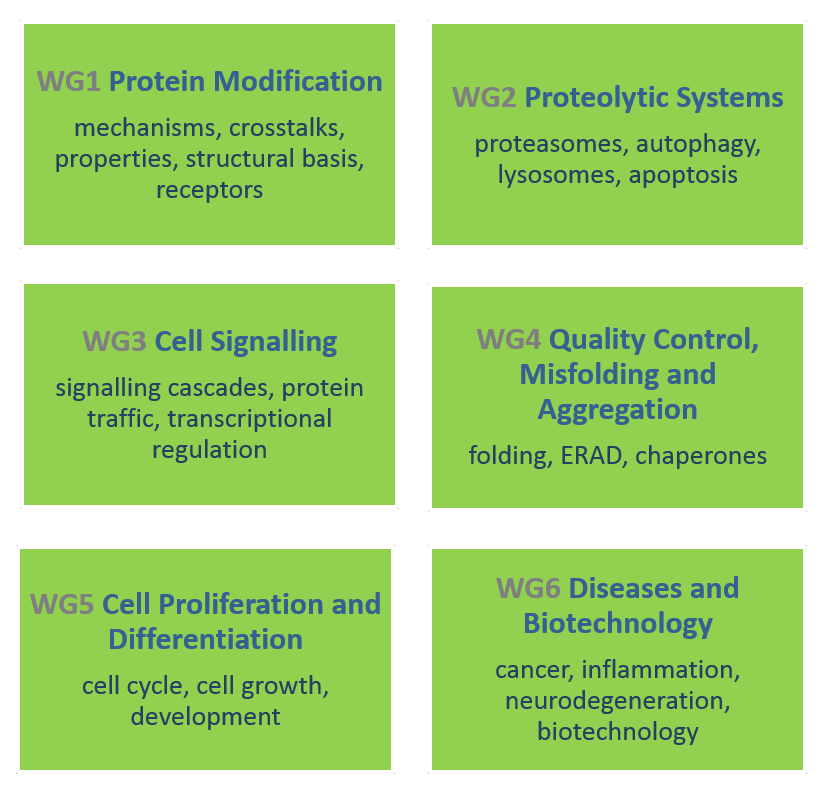PROTEOSTASIS network is structured around 6 Working Groups (WG) which cover a broad and complementary scientific spectrum within protein homeostasis:
WG1. Protein modification in intracellular proteolysis: mechanisms, roles and regulation.
The aim of this WG is to investigate (i) the mechanisms ofubiquitylation, SUMOylation and modifications by other Ub-like proteins, (ii) the crosstalks of factors involved in protein modification under basal and stress conditions, (iii) the post-modification mechanisms responsible for the physiopathological properties of the targeted proteins, (iv) the structural bases of protein recognition and (v) the characterization of Ub- or Ub-like receptors involved in the processes under investigation.
WG2. Intracellular proteolytic systems: mechanisms, structures and regulation.
This WG aims to understand (i) proteasome biogenesis and regulation, (ii) the molecular mechanisms controlling autophagy and (iii) the Ub-dependent and -independent processes regulating programmed cell-death/apoptosis.
WG3. Regulation of cell signalling.
This WG addresses (i) the regulation of signalling cascades under basal and stress conditions, (ii) the intracellular traffic of modified proteins and the identification of factors regulating these mechanisms in physiological and pathological situations, and (iv) the molecular mechanisms regulating transcription.
WG4. Protein quality control, misfolding and aggregation.
This WG investigates (i) the regulation of protein folding in physiology and pathology, (ii) the molecular mechanisms controlling the ERAD pathway and (iii) the functional characterization of chaperones involved in protein quality control.
WG5. Regulation of cell proliferation and differentiation.
This WG studies (i) the regulation of proteolysis during the cell cycle and (ii) the gene products regulating essential cellular processes during cell growth and differentiation.
WG6. Molecular bases of diseases, biomarkers, drug targets and biotechnology.
This WG (i) addresses issues connected to disease understanding, diagnosis and treatment, with an emphasis on cancer and immune and neurological disorders, and (ii) deals with biotechnology challenges involving protein engineering, and plant and animal breeding.

